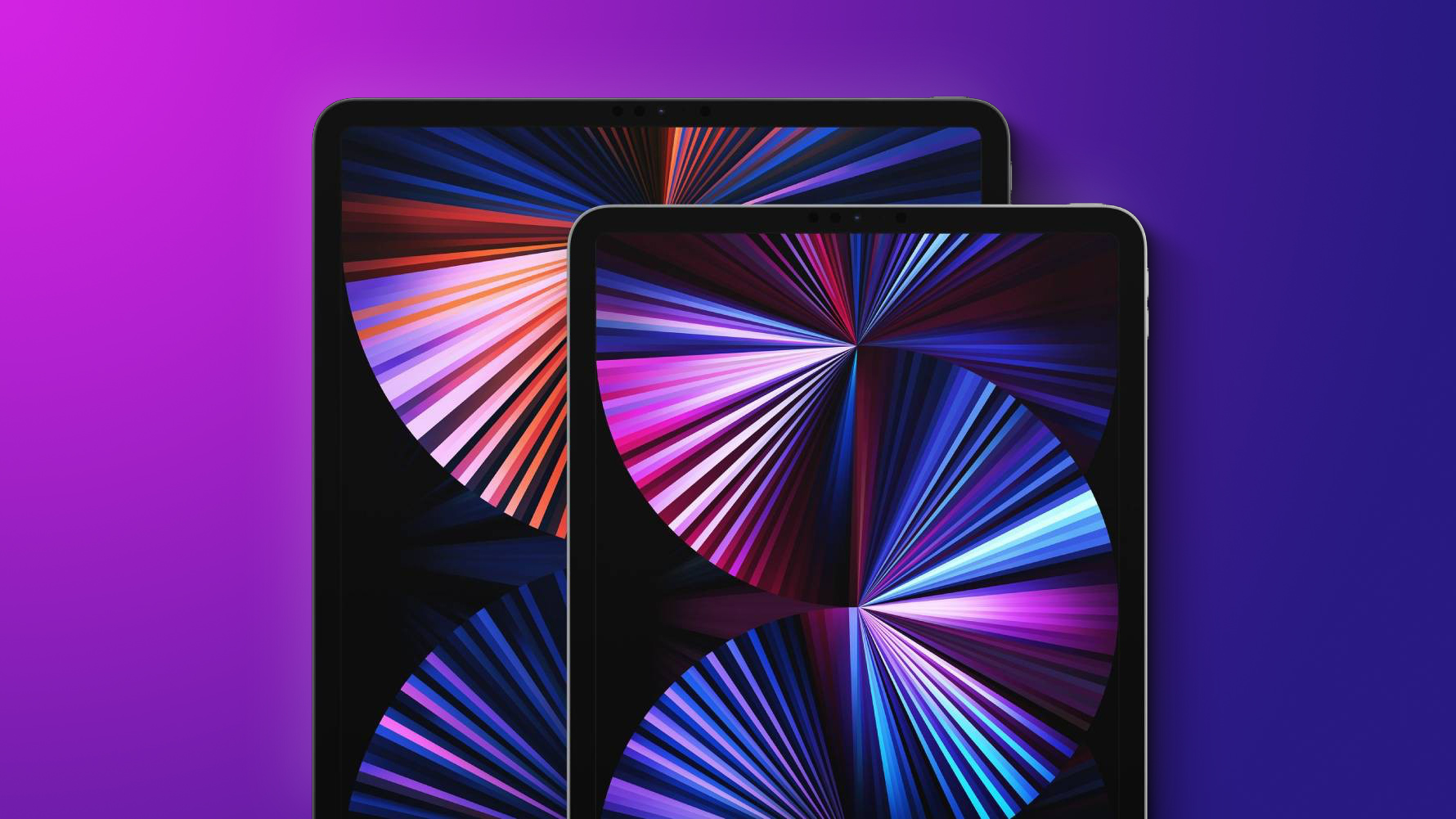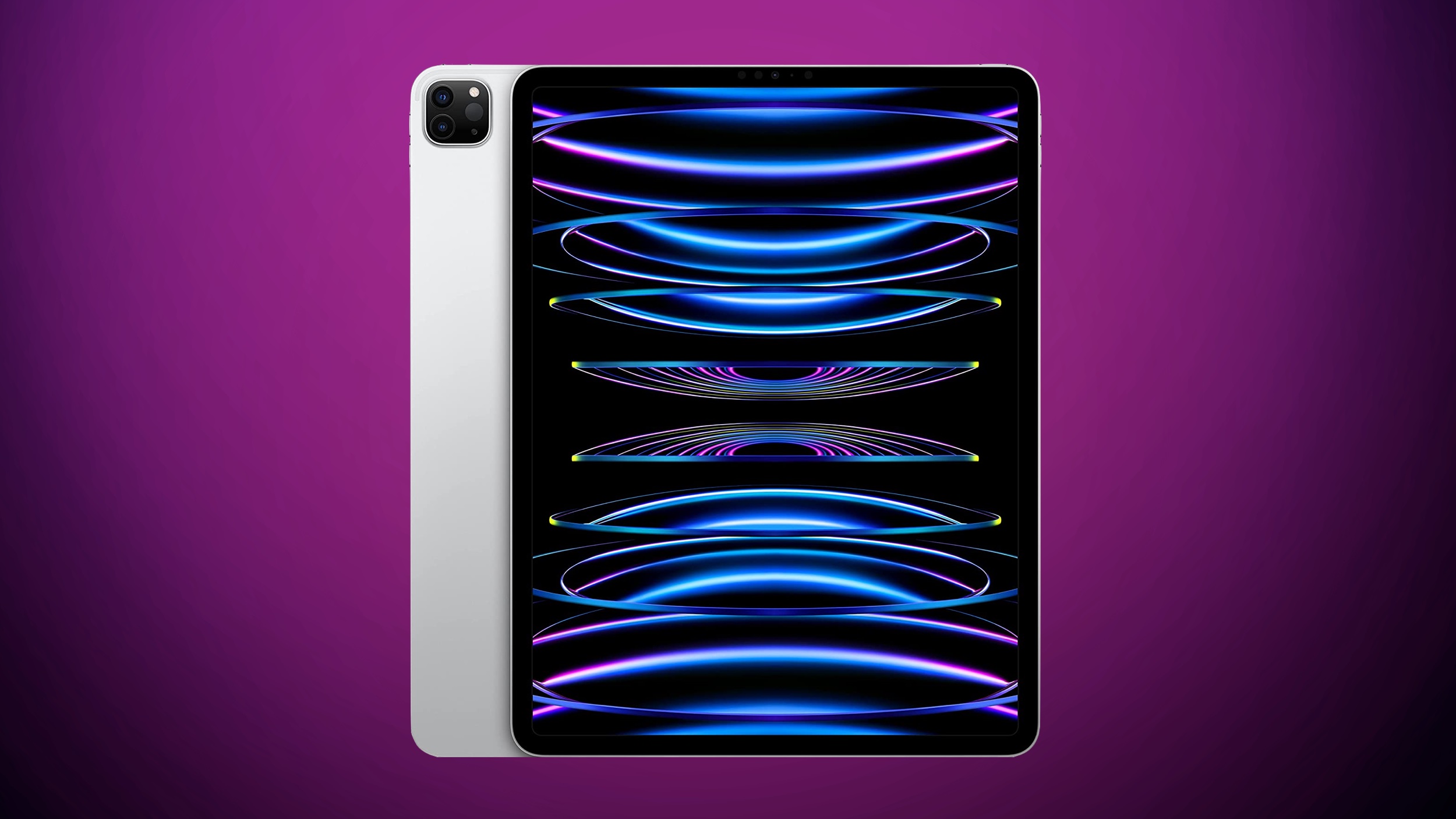
Apple is developing OLED technology for the iPad, and the new displays are expected to come to the iPad Pro models in May 2024.
This guide aggregates everything we know about Apple's plans for the OLED iPad Pro.
Sizing
Apple is expected to offer the first OLED iPads in sizes that are similar to the current iPad Pro sizes, providing one smaller 11.1-inch model and a larger 13.1-inch model. In the future, OLED iPad models could be as large as 15 inches, but Apple is sticking to smaller screen sizes for now.

Rumors suggest that Apple supplier BOE is developing OLED displays as large as 15 inches, which could be used for a larger-sized iPad. According to Bloomberg's Mark Gurman, Apple is considering iPads that exceed 12.9 inches, and in 2021, he claimed that larger sizes were a "couple of years down the road, but could be scrapped all together.
The OLED iPad Pro models could be much thinner than the current LED versions thanks to the new display technology. The larger 12.9-inch iPad Pro, for example, could be more than 1mm thinner.
- Current 11-inch iPad Pro - 247.6mm x 178.5mm x 5.9 mm
- Upcoming 11-inch iPad Pro - 249.7mm x 177.5mm x 5.1mm
- Current 12.9-inch iPad Pro - 280.6mm x 214.9mm x 6.4mm
- Upcoming 13-inch iPad Pro - 281.5mm x 215.5mm x 5.0mm
CAD drawings of the upcoming ~11-inch and ~13-inch iPad Pro models give us some insight into just how thin the tablets will be.


11-inch 2024 iPad Pro
CAD drawings of unreleased Apple devices often leak out of Apple's factories in China and other countries because the information is so valuable to case makers. Case makers use these measurements to design cases for new products in order to be the first to market with a protective case for a new device size.


13-inch 2024 iPad Pro
OLED Improvements
Compared to the mini-LED technology that Apple uses for the 12.9-inch iPad Pro at the current time, OLED will bring deeper blacks, faster refresh rates, and improved contrast.

Apple is said to be using "by far the best OLED tablet panels on the market" for the iPad Pro models, with support for LTPO (a more power efficient form of OLED), a 120Hz ProMotion refresh rate, and a tandem stack and glass thinning that will bring "ultra-thin and light displays" that support high brightness, extended battery life, and a long lifetime.
With an OLED display, the brightness of each pixel can be controlled individually, which means TV shows, movies, and other content that uses high dynamic range lighting will look much more realistic and true-to-life than on a mini-LED display, depending on how high Apple can boost brightness. OLED displays are also known for having better viewing angles than LED displays, but this is of less importance on a tablet-sized device than something like a TV.
OLED displays are more efficient than mini-LED displays, especially with the dual-stack technology that Apple plans to use. We can expect improved battery life on the OLED-equipped iPad Pro models, and it could facilitate always-on display technology on the iPad.
OLED technology can have downsides like burn-in and issues with maximum brightness, but Apple is using technology that will mitigate these problems. Unfortunately, it could make the first iPad Pro models much pricier.
Apple is rumored to be aiming for "unrivaled" image quality, as well as a design that cuts down on the thickness and weight of the iPad display.
Other New Display Technology
Apple could also add a matte screen option that's similar to the Studio Display's nano-texture glass, which would be offered in addition to a standard glossy finish. The matte screen features -4° to +29° of haze and Apple could advertise some kind of blue light blocking technology to protect the eyes. Matte finishes on displays are often designed to minimize glare and reflections.
Apple is planning to cut down on the size of the bezels of the iPad Pro display, and the bezels could be around 10 to 15 percent thinner.
M-Series Chip Technology
There is a "strong possibility" that Apple might use the M4 chip for the iPad Pro, and it would be the first device to get Apple's next-generation AI-focused processor. The M4 is rumored to have an upgraded Neural Engine and other optimizations aimed specifically at artificial intelligence.
If Apple does not opt for the M4, the new models will feature the M3 chip that was first used in the MacBook Pro and iMac models. Built on a 3-nanometer process, the M3 chip has a faster CPU and GPU compared to the M2 chip in the current iPad Pro models. Either chip will be a major update for the iPad Pro over the prior-generation M2... Click here to read rest of article
Article Link: Apple's 2024 OLED iPad Pro: All the Rumors So Far
- Article Link
- https://www.macrumors.com/guide/oled-ipad-pro/
Last edited:

